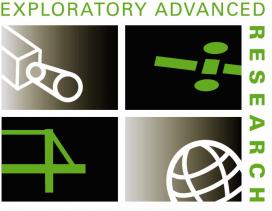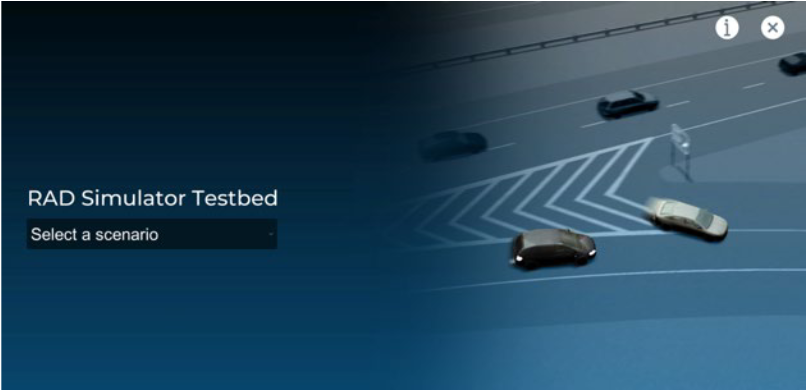Exploratory Advanced Research (EAR) Overview
Announcements
Privacy Preservation Solicitation Opportunity
The EAR program is working with the National Science Foundation to fund research that supports privacy preservation for naturalistic driving studies. More information about the program and solicitation requirements is available at Privacy-Preserving Data Sharing in Practice (PDaSP), National Science Foundation.
RAD Simulator Testbed
The Exploratory Advanced Research Program developed realistic artificial datasets (RADs) so State and local agencies can further research in safety data, high-risk roadway features, and effects of proposed safety measures. Data-driven safety analysis models coupled with RADs can test different cause-and-effect relationships.
MIMIC—Multidisciplinary Initiative on Methods to Integrate and Create Realistic Artificial Data
EAR Program Exploring Artificial Intelligence and Machine Learning Technology
The EAR Program is exploring the development of artificial intelligence and machine learning technology within the surface transportation sector. By working with universities, industry, and Government conducting cutting-edge research in these fields, FHWA ultimately seeks to make surface transportation safer and more efficient. To learn about how the EAR Program is supporting research in these areas, read the brochure The Role of Artificial Intelligence and Machine learning in Federally Supported Surface Transportation Initiatives.
The EAR Program also funded three computer vision research projects: Deep InSight: Deep Extraction of Driver State from Naturalistic Driving Dataset; Video Analytics for Automatic Annotation of Driver Behavior and Driving Situations in Naturalistic Driving Data; and Automated Video Processing Algorithms to Detect and Classify High-Level Behaviors with Speed and Accuracy.
Cultivating Materials Science Research
To combat the wear and tear that bridges and highways face, researchers are keen to explore how to build structures that are more durable and longer lasting. One way to approach this problem is through materials science. Materials science is a multidisciplinary approach to the scientific study of the production and use of materials through the lenses of chemistry, physics, and engineering.
FHWA's EAR Program actively supports research in materials science to address the health of U.S. highway structures and pavements and to provide a greater range of predictable materials for construction and repair of bridges and pavements. For the EAR Program, agency support and funding have focused on developing highway materials that not only emphasize enhanced functionality but also stress sustainability and cost savings.
The EAR Program recently awarded research funding for four new projects related to supplementary materials for highway pavements and structures. Three of the awards focus on different aspects of supplementary cementitious materials that could provide State DOTs with more reliable options of materials when designing and building roadways and structures. Awards went to Purdue University to examine the use of nontraditional and natural pozzolan-based materials or inorganic polymers; Oklahoma State University to develop classification methods for reclaimed fly ash; and the University of California, Los Angeles, to use machine learning methods to predict and optimize the performance of fly ash-containing binders in concrete. The fourth award went to researchers at Auburn University who are focusing on reducing the aging of asphalt binders so roadways last longer.
To learn more about the EAR Program's support for materials science research, read the brochure Cultivating Materials Science Research to Benefit Surface Transportation Initiatives, the fact sheet Inorganic Polymers: Novel Ordinary Portland Cement-Free Binders for Transportation Infrastructure, and the summary report Mechanisms of Hydration and Setting of Ordinary Portland Cement in Simple and Complex Systems.
Technology Readiness Level Guidebook Released
A publication by the EAR Program helps those working in transportation research conduct an evaluation to determine the maturity of a technology and identify the next steps in the research process. The Technology Readiness Level (TRL) Guidebook explains what a TRL is and how to prepare for, conduct, and use the results of TRL assessments. [more]
Read the full text of the TRL Guidebook.
NRC Postdoctoral Fellows Help EAR Program Solve Transportation Issues
The Turner-Fairbank Highway Research Center (TFHRC) conducts research across a wide range of topics and disciplines. To supplement the expertise of the permanent staff, it is important to bring in researchers with the appropriate backgrounds to investigate specific problems at short-term basis. Through the EAR Program, FHWA utilizes the Resident Associateship (or Postdoctoral Fellows) Program of the National Research Council (NRC) for this purpose. The NRC provides a process for selecting candidates on a competitive merit basis and subsequently for administration of the Resident Fellows during their tenures at FHWA.
To learn more about this program, visit the NRC Associates page.



